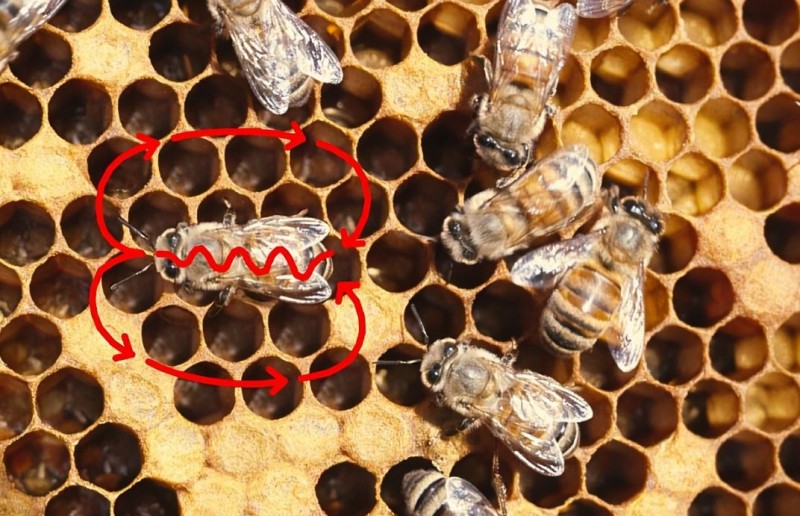
Honeybees, with their collective behavior and complex societies, have fascinated scientists and nature enthusiasts for centuries. Among the most intriguing aspects of their social interactions is the "waggle dance," a mesmerizing movement that serves as a sophisticated means of communication within the honeybee community. In this article, we will delve into the captivating world of honeybee communication, exploring the intricacies of the waggle dance and its significance in the life of these remarkable insects.
The Discovery of the Waggle Dance
The discovery of the waggle dance can be attributed to the pioneering work of Austrian ethologist Karl von Frisch. In the early 20th century, von Frisch dedicated years of observation to uncovering the secrets of honeybee communication. His groundbreaking research earned him a Nobel Prize in Physiology or Medicine in 1973, recognizing his significant contributions to the field.
How the Waggle Dance Works
At first glance, the waggle dance might appear as simple as a choreographed performance, but it is far more intricate than meets the eye. Honeybees employ specific movements, including wagging their abdomens and performing figure-eight patterns, to convey essential information to their hive mates.
During the dance, a forager bee communicates the location of a valuable food source or a potential nest site to its fellow worker bees. The direction of the dance, relative to the sun's position, indicates the direction of the resource. Additionally, the duration of the waggle phase corresponds to the distance of the site from the hive. This impressive encoding of information allows the colony to efficiently exploit food sources and expand their territory.
The Role of the Waggle Dance in Honeybee Colonies
The waggle dance plays a critical role in coordinating the activities of honeybee colonies. One of its primary functions is to communicate the location of food sources. For example, if a forager bee discovers a field abundant in blooming flowers, it will return to the hive and perform the dance to inform its sisters about the precise direction and distance to the flower patch.
Moreover, the waggle dance also aids in the selection of new nest sites. As honeybee colonies grow and swarm, they need to find suitable locations to establish new hives. The scout bees utilize the dance to share information about potential nesting sites they have explored, allowing the swarm to make a democratic decision on the best new home.
The Waggle Dance and Environmental Factors
The sophistication of the waggle dance does not end with its directional and distance communication. Honeybees display remarkable adaptability and flexibility when it comes to the dance, accounting for various environmental factors that could influence its accuracy.
To compensate for changes in the position of the sun throughout the day, honeybees adjust the angle of their dance relative to the vertical gravity vector. By making this compensation, they can still communicate accurately even when the sun's position changes.
Furthermore, environmental changes, such as the presence of obstacles, also affect the dance. The forager bees are known to incorporate adjustments in their dance to inform their sisters about potential obstacles they might encounter on their way to the food source.
Similar Communication Systems in Other Insects
While the waggle dance remains one of the most intricate and well-studied forms of insect communication, it is not the only method employed by insects to share vital information. Other species also have fascinating communication systems tailored to their specific needs.
For example, ants communicate using chemical trails to mark paths to food sources, while honeybees use the waggle dance. Similarly, certain species of butterflies and moths use pheromones to find suitable mates and breeding locations, demonstrating the diverse range of communication strategies present in the insect world.
The Fascinating World of Honeybee Communication
The study of honeybee communication never ceases to amaze researchers and nature enthusiasts alike. These tiny insects exhibit intelligence, adaptability, and complex social behavior that continues to captivate scientists. The waggle dance represents just one of the many wonders of the natural world, showcasing the intricacies of life within a honeybee colony.
As research into honeybee communication progresses, scientists continue to uncover new insights into the workings of the waggle dance and the hidden language of these incredible insects. The more we understand about honeybee communication, the better equipped we become to protect and support these vital pollinators, whose role in our ecosystems is indispensable.
The waggle dance is a remarkable example of the advanced communication skills that honeybees possess. Through intricate movements and precise encoding of information, they convey essential details about food sources and potential nesting sites, fostering a cohesive and efficient colony. As we unravel the secrets of honeybee communication, we gain a deeper appreciation for the sophistication of these tiny creatures and their critical role in the natural world.
Govt Action Looms for Twitter after Viral Video of Manipur Women Paraded Naked
Manipur Unrest: CM Urges Thorough Probe into Viral Video's Authenticity
Sonia Gandhi Urges PM Modi for Manipur Discussion in Parliament